
Ocean Optics group
The Ocean Optics group controls how the light in your scene will affect the water in the ocean.
How it works: The coloration of a large body of water is determined by two main properties: One, the direct light color reflecting from the surface. Two, the light emanating from below the water surface, called 'upwelling'. Upwelling light consists of direct light that has been absorbed by the water instead of being reflected. This light is refracted and scattered by the water molecules and finally 'wells' back up to the surface as filtered diffuse Light. Ocean Optics let you control the color and intensity of the upwelling light.

Ocean Optics group.
Water Color
Sets the color of the upwelling light. In Psunami, the color of Light reflected from the water surface is based on the color of the original Light source. The color of the upwelling Light is separately controllable with the Water Color property.
When the camera is above the water, the upwelling light does not typically contribute much to the overall scene. Above water, you will see only a slight difference between scenes when using different Water Color swatches. This is because water viewed from above normally gets most of its color by reflecting the overhead Lighting in your scene. The upwelling light becomes more dominant when you're underwater, as you can see in our screenshots below. You can use Water Color to help add some detail to your underwater scenes.
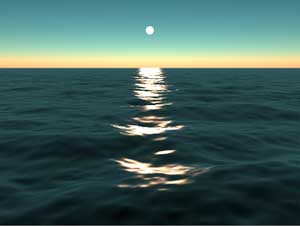


Left to right, Water Color at black (default), dark blue and white.
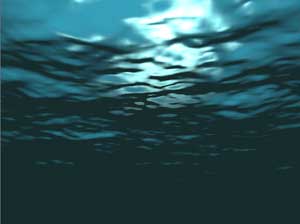
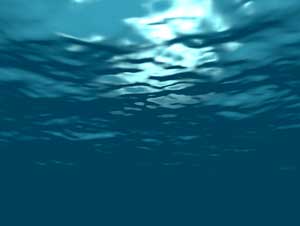
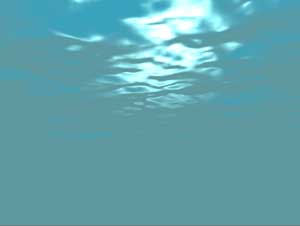
Left to right, Water Color at black (default), dark blue and white.
Water Color Scale
Sets the intensity of the upwelling light. Set this to values of 3 or above to make the water look like it is glowing.
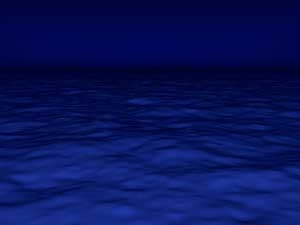
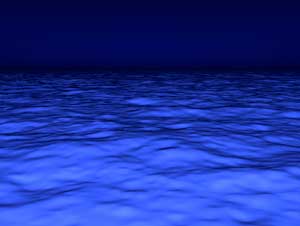
Left to right, Water Color Scale at 10 and 30. Water Color is set to bright blue.
We have used the Luminance> Glowing Blue preset.
Index of Refraction
Sets how much the upwelling light will be refracted by the water in your ocean. High values effectively decrease the brightness of the upwelling light. You can also use Index of Refraction to increase the contrast of the ocean surface when viewed from above, if you find that the water surface looks washed out.